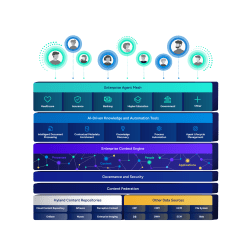Best practices for cybersecurity in healthcare
“It all boils back to good security and IT hygiene,” Border said on the Health Innovation Matters podcast.
Here are 10 high-level tips from Hyland’s cybersecurity experts.
It starts at the top
“Having leadership support is critical to success,” Dennis said.
Educate your users
“This is an absolute need. This is not an optional factor,” Border said.
According to IBM Security’s research, the average cost of a data breach for organizations with high levels of employee training was $3.68 million. The norm was $1.5 million higher for organizations with low levels of employee training ($5.18 million).
> Learn more | Webinar: Hyland, Northwell Health and Texas Children's Hospital experts discuss how help desks can fend off the latest wave of cyberattacks.
Multifactor identification
“During a phishing scam, when an attacker goes to use the credentials that they’ve successfully harvested from you, you’ll get that prompt, and that will be your key to not actually log into that service right now,” Border said.
Know your vulnerabilities
Examine your external vulnerabilities and internet footprint. If there are any weaknesses, attackers will be ready to exploit them.
“If we’re talking about one area where healthcare really is lacking, I think it’s around vulnerability management,” Border said.
Be proactive
“Your people are going to be your weakest link,” Dennis said. “They need to know how to identify attacks, how to report attacks and what to do in those types of attacks.”
Different levels of control
“You’ll want to have different levels of technical controls across the organization,” Dennis said.
This can include email filters, antivirus and malware protection, and other measures to block entry points.
Limit administrative rights
Providing such access only where it’s “absolutely required” can significantly limit the risk of attacks, Dennis said.
Constantly monitor your environment
“You want to make sure you have offline encrypted backups and you’re regularly testing those backups,” Dennis said. “That way, you can react quickly and react accordingly when you’re attacked.”
Third-party reviews
Getting an outsider’s assessment of your network can identify risks that you might not have seen during internal reviews.
View it as a business enabler
Cybersecurity is no longer a “check-the-box function,” Dennis said. Understand its importance and the leadership support it requires.















